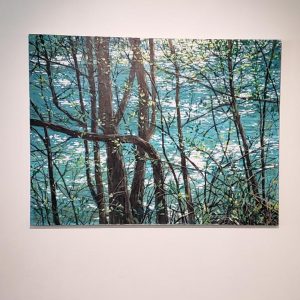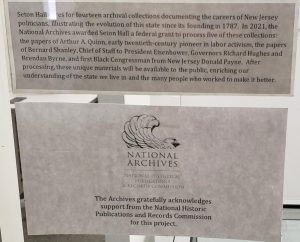
Seton Hall cares for fourteen archival collections documenting the careers of New Jersey politicians, illustrating the evolution of this state since its founding in 1787. In 2021, the National Archives awarded Seton Hall a federal grant to process five of these collections: the papers of Arthur A. Quinn, early twentieth-century pioneer in labor activism, the papers of Bernard Shanley, Chief of Staff to President Eisenhower, Governors Richard Hughes and Brendan Byrne, and first Black Congressman from New Jersey Donald Payne. After processing, these unique materials will be available to the public, enriching our understanding of the state we live in and the many people who worked to make it better.

The exhibit includes photographs of these politicians, excerpts from their writings, political buttons issued by their campaigns, and most exciting: the daily diary kept by Bernard Shanley when he was Chief of Staff to President Eisenhower. The archives has a full copy of the diary now available to researchers, in addition to the bound copy on display.

Along the Delaware
35 1/2” x 47 1/2”
oil on canvas
Date Unknown
2011.29.0001
Seton Hall University Permanent Collection
This exhibit is currently on display in the Archives Reading Room and may be viewed when the library is open. Hanging next to the hallway exhibit is a landscape by Seton Hall professor Edwin Havas, titled “Along the Delaware,” providing a contrast of the natural landscape in which all this political debate took place.
Special Collections and the Gallery acknowledge the support of the National Historic Publications and Records Commission, which generously provided funding for the archival work which made this exhibit possible.
